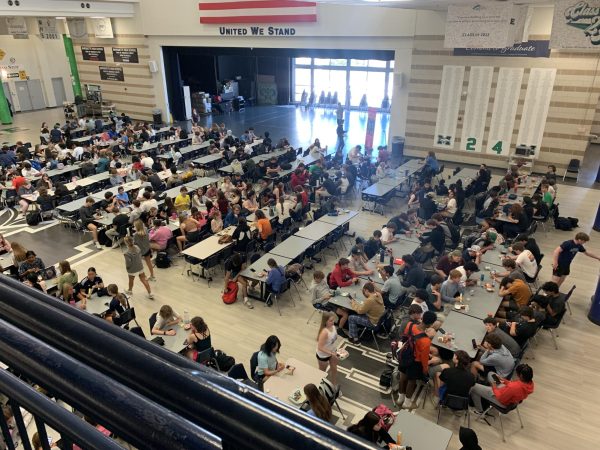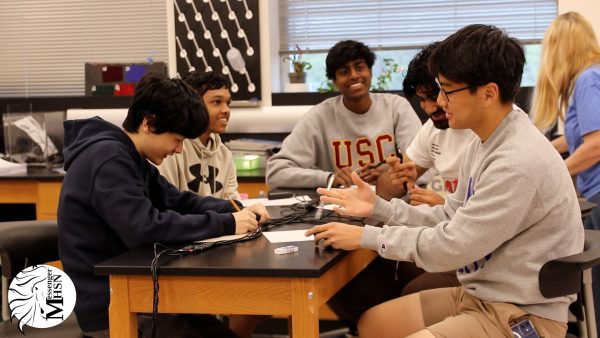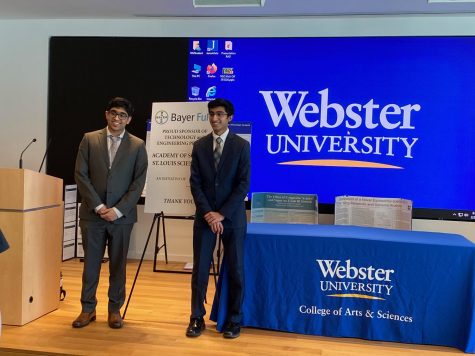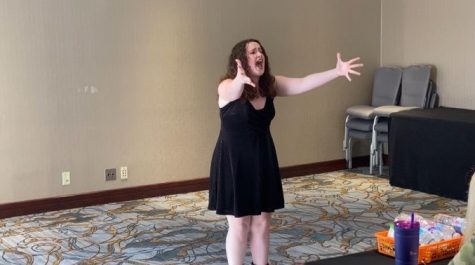Flex Time Raises Concerns for Students with Allergies
Media by Kailin Zhang
Miranda Knittel, freshman, eats lunch with her friends during Flex Time. Students with allergies and their friends tend to stay wary of allergy concerns due to students being able to eat around the school during Flex Time.
As the bell rings for Flex Time, students flock the halls, eating lunch, working on homework and chatting with friends. While Flex Time gives students the freedom to eat lunch at different times in various locations, it also presents challenges for students with allergies.
Miranda Knittel, freshman, is allergic to tree nuts. To look out for her own safety, Knittel said she stays attentive every day and takes precautions in order to ensure her well-being at school.
“I know what I’m allergic to so I make sure to pay attention to labels,” Knittel said. “There is still that concern that I can potentially eat a tree nut, but I’m careful about it.”
Knittel said designating areas for students with severe allergies to eat lunch in can be an effective way to help students. In the future, Knittel hopes the school continues to communicate with those who need special accommodations.
“They can help people who can’t be near certain foods,” Knittel said. “While I just have to make sure I wash my hands if I ever end up touching a tree nut, other students may suffer from more intense allergies such as airborne allergies.”
Principal Dr. Steve Hankins said the staff is aware of the potential dangers and is working with students with allergies to ensure a safe environment.
Students with allergies need to look out for themselves and make sure they’re wiping tables down before using them.
— Gina Emms
“Before, when all students ate lunch in the Commons, students with allergies were able to physically move away,” Dr. Hankins said. “But now that students are eating in various classrooms during Flex Time, students with allergies who are in the rooms after Flex Time don’t have that option anymore.”
Dr. Hankins said teachers are provided with disinfectant wipes and are asked to keep an eye on students. He said the goal is for students eating in certain classrooms to grab a disinfectant wipe and wipe down the tables themselves.
Depending on the severity and the personal needs of the student, Dr. Hankins said there are different courses of action the school can take. In the case of a severe allergy, he said food will not be allowed to be consumed in certain areas of classrooms in order to keep students safe.
“Whether it’s having a designated area in that classroom for kids to eat, or making sure all desks are being wiped down or completely eliminating eating in that class, we want to make sure it’s safe,” Dr. Hankins said. “We will adapt when necessary.”
Gina Emms, school nurse, said it is important for students with allergies to be an advocate for themselves and communicate with peers and teachers around them in order to ensure they are in an allergy-safe area.
Emms said MHS is not a peanut-free school, so Flex Time can make it hard, especially for kids with allergies to peanuts and tree nuts, for students to look out for their allergens.
“Students with allergies need to look out for themselves and make sure they’re wiping tables down before using them,” Emms said. “It is important to educate the students around them so they know what signs and symptoms to look for and what they can do to help a student in case of an allergic reaction. Anyone can technically be eating anything, anywhere.”
Your donation will support the student journalists of Marquette High School. Your contribution will allow us to purchase equipment and cover our annual website hosting costs. You may become a PATRON by making a donation at one of these levels: White/$30, Green/$50, Blue/$100. Patron names will be published in the print newsmagazine, on the website and once per quarter on our social media accounts.
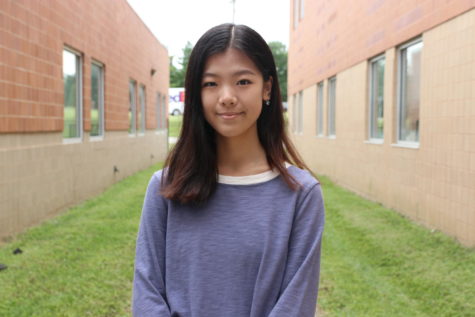
Kailin Zhang, senior, is the Online Editor for the Messenger, and has been part of the Messenger since 2017. Kailin is also involved with the National...




